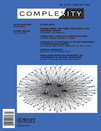
COMPLEXITY
Scope & Guideline
Empowering Scholars to Navigate Complexity
Introduction
Aims and Scopes
- Complex Systems Modeling and Analysis:
Research papers often explore the dynamics and behaviors of complex systems, including ecological models, economic systems, and social networks, using mathematical and computational techniques. - Interdisciplinary Applications of Complexity Theory:
The journal emphasizes the application of complexity theory in diverse fields such as ecology, sociology, economics, and engineering, showcasing how complex interactions influence system behavior. - Data-Driven Approaches and Machine Learning:
There is a significant focus on employing machine learning and data analytics to solve complex problems, enhance predictions, and optimize systems, reflecting the growing trend towards data-centric research. - Control Systems and Optimization Techniques:
Many studies involve developing control strategies for complex systems, including adaptive control, robust control, and optimization algorithms, highlighting practical implications for engineering and technology. - Epidemiological Modeling and Public Health:
The journal publishes research on modeling infectious diseases and public health dynamics, particularly in the context of global health challenges such as pandemics.
Trending and Emerging
- Artificial Intelligence and Machine Learning:
There is a notable increase in publications utilizing AI and machine learning techniques for predictive modeling, optimization, and data analysis, indicating a strong trend towards integrating these technologies into complexity science. - Network Theory and Graph Analysis:
Research focusing on complex networks, including social networks, ecological networks, and transportation networks, is trending, highlighting the importance of network structures in understanding complex systems. - Sustainability and Environmental Impact:
Emerging themes related to sustainability, including the impact of climate change and resource management, are increasingly featured, reflecting global concerns and the need for sustainable solutions. - Dynamic Systems and Control Strategies:
A growing interest in the dynamics of complex systems and the development of innovative control strategies to manage these systems effectively is evident, particularly in engineering and robotics. - Health Informatics and Epidemiological Modeling:
Research related to health informatics, especially in the context of epidemic modeling and public health responses, has surged, particularly in light of recent global health crises.
Declining or Waning
- Traditional Statistical Methods:
There seems to be a shift away from classical statistical methods towards more advanced machine learning and data-driven approaches, indicating a waning interest in conventional techniques. - Basic Theoretical Discussions:
The journal's focus has increasingly moved towards applied research and case studies, with fewer publications dedicated to purely theoretical discussions or foundational aspects of complexity science. - Single-Domain Applications:
Research that is limited to a single domain, without interdisciplinary connections, appears to be less favored. There is a growing preference for studies that integrate multiple fields and perspectives. - Qualitative Research Methods:
Qualitative studies have become less frequent, as the journal increasingly prioritizes quantitative and computational methodologies that provide measurable outcomes and predictive insights.
Similar Journals

Journal of Cellular Automata
Transforming Theories into ApplicationsWelcome to the Journal of Cellular Automata, an esteemed publication dedicated to advancing the understanding and application of cellular automata in various contexts. Published by OLD CITY PUBLISHING INC in the United States, this journal serves as a pivotal platform for researchers, professionals, and students in the fields of Computer Science and Control and Systems Engineering. Since its inception in 2008, the journal has provided a unique avenue for disseminating original research, reviews, and case studies that drive innovation in these interdisciplinary areas. Although it currently holds a Q4 ranking in Scopus for both Computer Science and Control and Systems Engineering categories, the journal aims to enhance its impact through rigorous peer review and the promotion of groundbreaking ideas. While access options do not include an open-access model, contributors and investigators can look forward to a vibrant exchange of knowledge dedicated to exploring the complexities and applications of cellular automata in various systems. Join us in our journey as we delve into the intricacies of this fascinating domain, contributing to the collective understanding and technological advancement within the scientific community.

Networks and Heterogeneous Media
Pioneering Discoveries in Heterogeneous Media and SystemsNetworks and Heterogeneous Media is a distinguished journal published by the American Institute of Mathematical Sciences (AIMS), focusing on the dynamic interplay of networks across various interdisciplinary fields including applied mathematics, computer science, and engineering. With a diverse and robust scope, the journal aims to facilitate the advancement of knowledge regarding complex systems and heterogeneous media through the publication of cutting-edge research. The journal has exhibited notable academic impact, currently positioned in Q2 and Q3 quartiles across several key categories such as applied mathematics, engineering, and statistics, indicating its relevance and influence within the scientific community. Researchers and professionals exploring intricate mathematical models, computational applications, and statistical methodologies will find Networks and Heterogeneous Media an invaluable resource for both foundational studies and innovative applications. The journal regularly publishes high-quality articles, contributing to emerging discussions and developments in a rapidly evolving field.
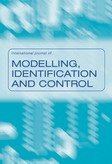
International Journal of Modelling Identification and Control
Connecting researchers to the forefront of analytical advancements.The International Journal of Modelling Identification and Control, published by INDERSCIENCE ENTERPRISES LTD, serves as a pivotal platform for the dissemination of cutting-edge research in the fields of applied mathematics, computer science applications, and modeling and simulation. With an ISSN of 1746-6172 and E-ISSN 1746-6180, this journal has been a crucial resource for academics and professionals since its inception in 2006, and it continues to engage researchers worldwide, aspiring to advance the methodologies and applications within these disciplines through high-quality publications. As a Q4 ranked journal in several categories according to the 2023 metrics, it provides insights into the evolving landscape of modeling and control techniques, aiming to bridge the gap between theoretical research and practical implementations. While not primarily open access, the journal allows readers from diverse backgrounds to explore and contribute to essential findings, fostering innovation and collaboration. The journal’s relevance is amplified by its engaging editorial content that invites submissions reflecting contemporary challenges and advancements, particularly from those at the forefront of analytical research and computational applications.
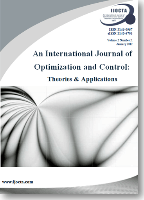
International Journal of Optimization and Control-Theories & Applications-IJOCTA
Connecting Scholars to the Future of Applied Mathematics.International Journal of Optimization and Control-Theories & Applications (IJOCTA), published by Ramazan Yaman, stands as a pivotal platform in the fields of applied mathematics and control optimization. With an ISSN of 2146-0957 and an E-ISSN of 2146-5703, IJOCTA has embraced an Open Access model since 2011, ensuring that its scholarly contributions are widely accessible to researchers, professionals, and students alike. Based in Turkey at the Istanbul Atlas University, the journal is committed to advancing the scope of optimization and control theories, featuring comprehensive studies that bridge theoretical foundations with practical applications. Despite its relatively recent surge, IJOCTA has achieved impressive standings, including a Q3 quartile ranking in both Applied Mathematics and Control and Optimization for 2023, alongside commendable Scopus rankings (Rank #192 in Applied Mathematics and Rank #44 in Control and Optimization). These metrics underscore the journal’s growing significance and impact within the global research community, making it an invaluable resource for those seeking to explore contemporary developments in optimization and control.

Control Engineering and Applied Informatics
Empowering Researchers through Interdisciplinary CollaborationControl Engineering and Applied Informatics, published by the Romanian Society for Control Technology and Informatics, serves as a pivotal platform for disseminating research and advancements within the fields of control engineering and applied informatics. With an ISSN of 1454-8658, this journal focuses on integrating theoretical developments and practical applications in the context of both electrical engineering and computer science. Although it currently holds a Q4 ranking in both Computer Science (miscellaneous) and Electrical and Electronic Engineering categories, its commitment to fostering interdisciplinary collaboration and innovation makes it a noteworthy publication for researchers and professionals aiming to explore emerging trends and solutions in control systems. Situated in Romania, the journal has a converged publication timeline from 2010 to 2024, providing a rich archive of information for those invested in the scientific community. Readers are encouraged to access this journal to remain at the forefront of cutting-edge research and contribute to ongoing discussions in the field.
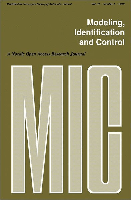
MODELING IDENTIFICATION AND CONTROL
Elevating Research Standards in Open Access PublishingMODELING IDENTIFICATION AND CONTROL is a prominent academic journal dedicated to the fields of Computer Science Applications, Control and Systems Engineering, Modeling and Simulation, and Software. Published by MIC in Norway, this open access journal has been providing valuable insights and innovative research since 1980, promoting the free dissemination of knowledge. With a reputation reflected in its 2023 quartile rankings—Q3 in Computer Science Applications, Q2 in Control and Systems Engineering, and Modeling and Simulation, as well as Q3 in Software—this journal plays a vital role in advancing theoretical and practical solutions within its disciplines. Researchers and professionals benefit from its rigorous peer-review process and impactful publications, fostering collaboration and the exploration of emerging technologies across various applications. The journal's continual commitment to excellence is exemplified by its active presence in Scopus, where it maintains respectable rankings in relevant engineering and computer science subcategories, supporting its goal to be a pivotal resource for scholarly communication and practical advancements.

Ecological Complexity
Exploring the depths of complex ecological systems.Ecological Complexity is a prestigious academic journal published by Elsevier, dedicated to advancing the understanding of complex ecological systems through innovative modeling and analysis. With an ISSN of 1476-945X and an E-ISSN of 1476-9840, this journal has been a critical platform for researchers since its inception in 2004, with a forecasted operation until 2024. The journal enjoys an esteemed Q2 ranking in both the Ecological Modeling and Ecology, Evolution, Behavior and Systematics categories as of 2023, highlighting its significant impact and relevance in the field. Additionally, it ranks impressively in Scopus, with 85th out of 721 in the Ecology category and 11th out of 41 in Ecological Modeling, illustrating its commitment to high-quality research dissemination. While it does not currently offer Open Access options, Ecological Complexity remains a vital resource for ecologists, environmental scientists, and interdisciplinary researchers aiming to deepen their understanding of ecological interactions and systems. The journal is based in the Netherlands at RADARWEG 29, 1043 NX, AMSTERDAM, and serves as an essential forum for fostering innovative research that bridges theoretical concepts and practical applications in ecology.
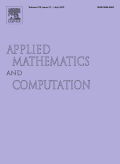
APPLIED MATHEMATICS AND COMPUTATION
Navigating the Intersection of Theory and ApplicationApplied Mathematics and Computation is a premier journal dedicated to the dissemination of high-quality research in the field of applied mathematics and computational methods. Published by Elsevier Science Inc, this influential journal has established itself as a key resource for researchers, professionals, and students interested in mathematical modeling, numerical analysis, computational algorithms, and their applications across various disciplines. With an impressive impact factor reflecting its scholarly credibility, it holds a distinguished position in the Q1 quartile for both applied and computational mathematics as of 2023, ranking #31/635 and #12/189 in Scopus categories respectively, thereby indicating its significant impact on the academic community. The journal encompasses a broad spectrum of topics, encouraging original research, critical reviews, and innovative methodologies that address real-world challenges. Although it currently does not offer open access options, it remains a cornerstone publication for those at the forefront of mathematical research, continuously bridging theory with practical computation since its inception in 1975.
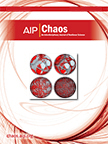
CHAOS
Innovating Theories for a Chaotic WorldCHAOS, an esteemed journal published by AIP Publishing, is a cornerstone of interdisciplinary research, focusing on the intricate dynamics of complex systems across various scientific domains. With a balanced impact factor, this journal emphasizes high-quality contributions in Applied Mathematics, Mathematical Physics, and Statistical and Nonlinear Physics, while also exploring intersections with Medicine and Physics and Astronomy. With rankings showing a remarkable percentile placement, notably #7 in Mathematical Physics and #10 in Statistical and Nonlinear Physics, CHAOS has established itself as a leading platform for disseminating groundbreaking research since its inception in 1991. This journal not only aims to foster collaboration among scientists but also to advance theoretical and computational frameworks that unravel the complexities of chaotic systems. Researchers, professionals, and students alike will find rich insights and innovative theories within its pages, making it an invaluable resource in the pursuit of knowledge and understanding in the modern scientific landscape.

Journal of Applied Mathematics
Empowering discovery in the realm of applied mathematics.Journal of Applied Mathematics, published by HINDAWI LTD, is a prominent open-access journal dedicated to advancing the field of applied mathematics. Since its inception in 2001, it has provided a vital platform for researchers and practitioners to share their findings in various areas of applied mathematical theory and its applications across disciplines. With an ISSN of 1110-757X and an E-ISSN of 1687-0042, the journal has established a respectable position within the academic community, evidenced by its ranking of #255 out of 635 in the Scopus Ranks for applied mathematics, placing it in the 59th percentile. Featuring a Q3 category quartile as of 2023, it aims to foster innovative research that bridges theoretical mathematics with real-world applications. Researchers, students, and professionals can freely access its content, promoting a collaborative approach to knowledge dissemination. With a commitment to high-quality research, the Journal of Applied Mathematics continues to play a crucial role in the evolution of applied mathematical methodologies and practices.